See related article:
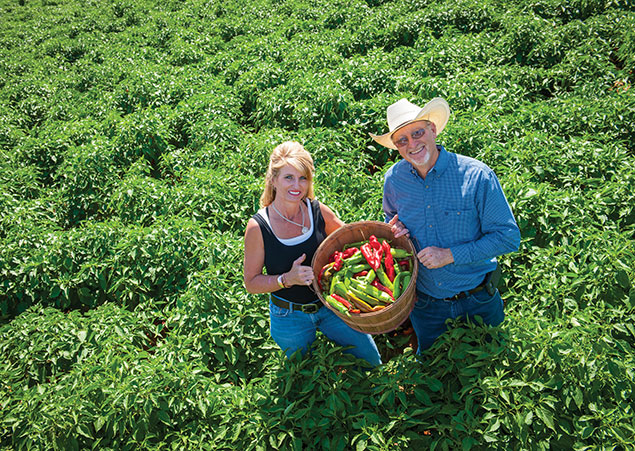
Evelyn and Rick Ledbetter of Portales, N.M., sell fresh green chile directly to consumers in addition to growing paprika and jalapeños for commercial processing. Rick is chairman of the New Mexico Chile Commission and treasurer of the New Mexico Chile Association, and Evelyn is chairman of the board at the Roosevelt County Electric Cooperative and director of payroll at Roosevelt General Hospital.
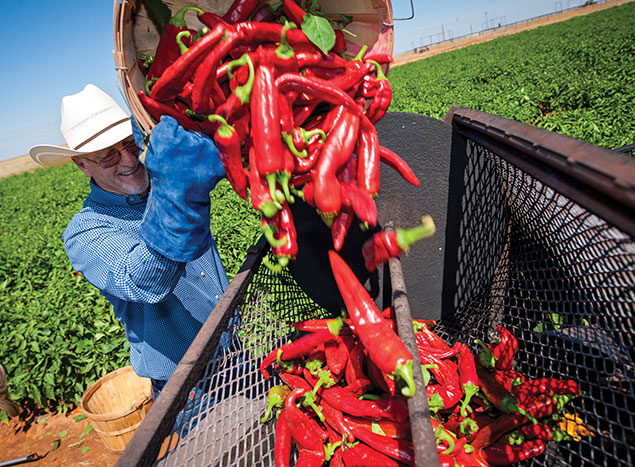
Rick Ledbetter gets ready to roast long green chile that has ripened and turned red in the September sun. He still uses the steel roaster made by his late father, Delbert, a farmer and precision welder who became a member of PCA of Eastern New Mexico — now Ag New Mexico — the day Rick was born.
Photo by Artie Limmer/Artie Limmer Photografiks
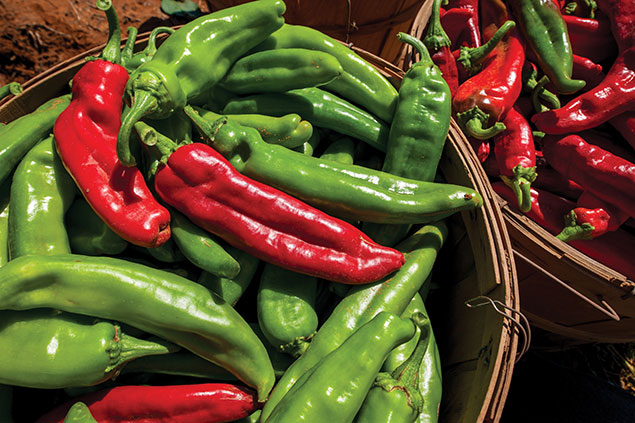
The Ledbetters sell four varieties of green chile — from mild to extra hot — at farmers markets in Portales and Clovis, N.M., and to local restaurants. "People ask if the red or the green is hotter, but it just depends on the variety. Chile turns red and gets sweeter when it ripens, so if it's a hot green chile, it's going to be a hot red chile," Evelyn Ledbetter says.
Photo by Artie Limmer/Artie Limmer Photografiks
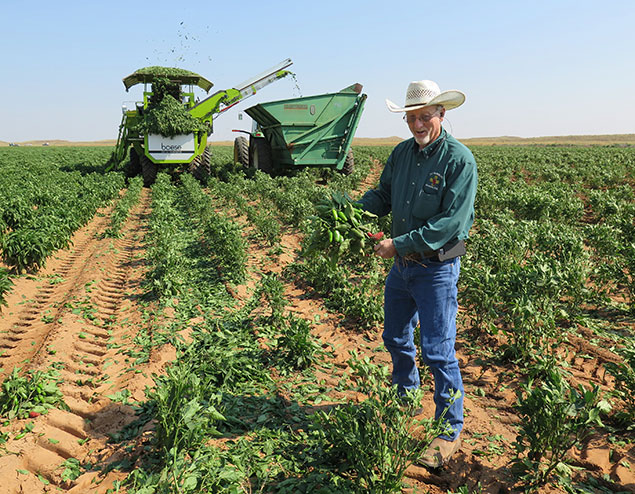
The Ledbetters machine-harvest two chile types: super-hot jalapeños that are dehydrated for spices, above, and paprika that is processed for natural red food coloring. The long green chile that they sell fresh must be picked by hand.
Photo by Christine Forrest/Farm Credit Bank of Texas
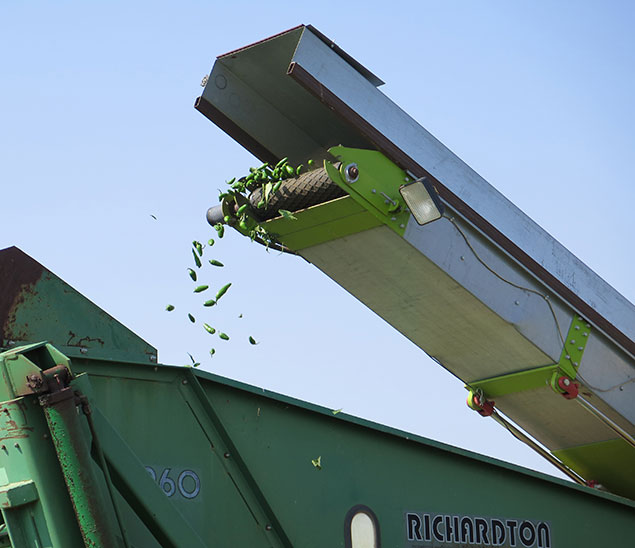
Glossy jalapeños tumble off the harvester, which Rick and son Spencer modified to improve the cleaning process. "Jalapeños are a pretty pepper. My son and I will eat them like there's no tomorrow," Rick says.
Photo by Christine Forrest/Farm Credit Bank of Texas
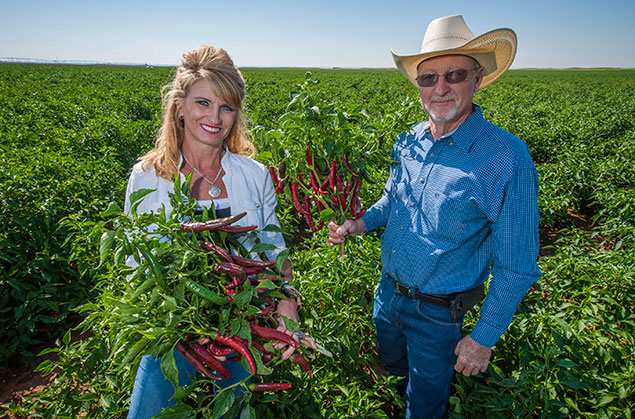
One chile type that Evelyn and Rick Ledbetter grow is paprika, which has been used as a natural food coloring for thousands of years. The crop surged in popularity after Red Dye No. 2 was banned in the U.S., and is used to color processed meats, cheeses, sauces, spices, poultry feed and many other products.
Photo by Artie Limmer/Artie Limmer Photografiks
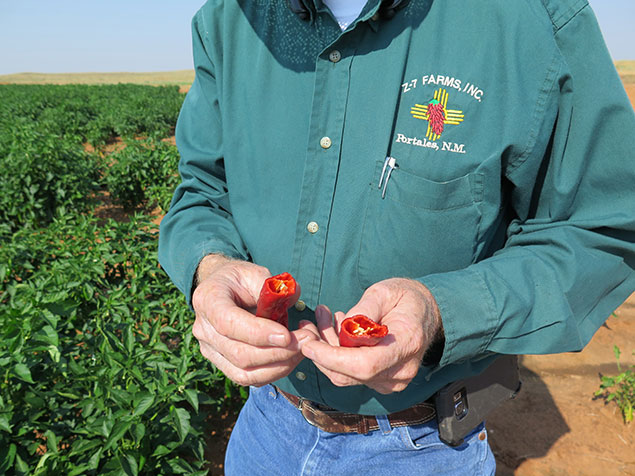
Rick Ledbetter snaps open a pod of paprika, which has thin walls and high pigment levels for better dehydration and color extraction. Bred for use as a natural dye, it also has a sweet, mild flavor.
Photo by Christine Forrest/Farm Credit Bank of Texas
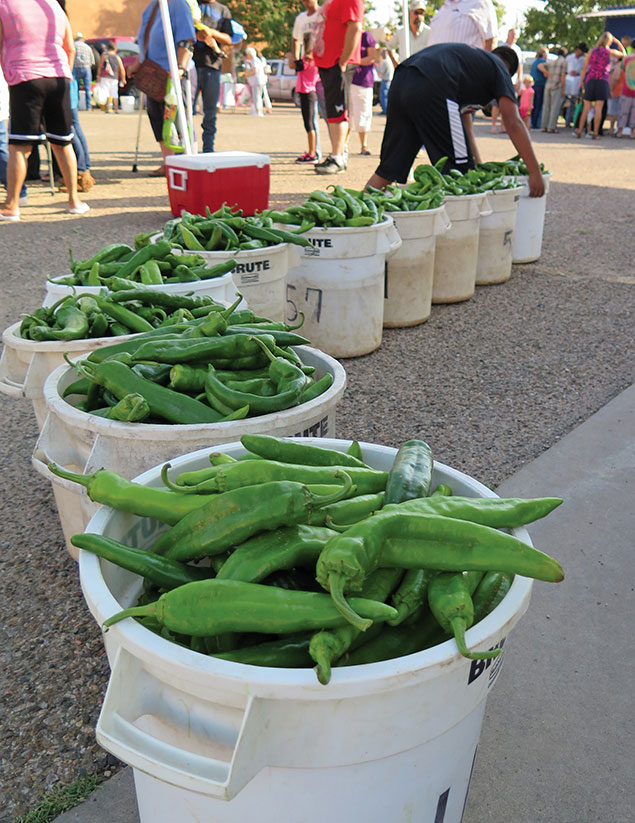
Bushels of long green chile, also known as New Mexican chile, wait their turn for the roaster at the farmers market in downtown Portales. Depending on variety and growing conditions, green chile can be as mild as a bell pepper or as hot as a jalapeño, or about 150 to 10,000 Scoville Heat Units.
Photo by Christine Forrest/Farm Credit Bank of Texas
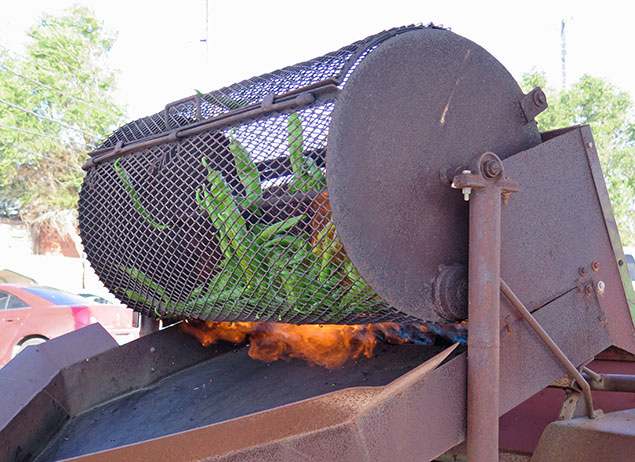
Green chile is hand-picked from August until first frost. To make it easier to peel, a roaster rotates the pods over a roaring burner, quickly charring the skin without cooking the flesh. "We roast a bushel in about a minute and a half," Rick Ledbetter says.
Photo by Christine Forrest/Farm Credit Bank of Texas
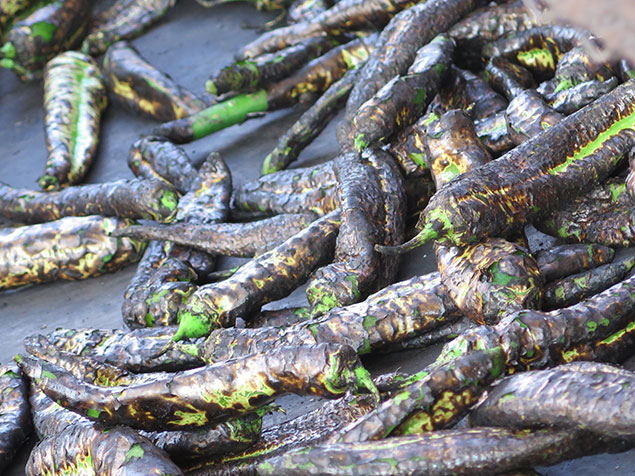
Long green chile is a unique pod type developed at New Mexico State University (NMSU) about a century ago. Once roasted, peeled and seeded, it is stuffed, cooked into stews and salsas, and draped over burgers and enchiladas. "We pretty much eat them on everything — eggs, pollo asado, spaghetti. You can't go wrong," says daughter Alex Ledbetter, an NMSU biology student who works part time at the New Mexico Department of Agriculture.
Photo by Christine Forrest/Farm Credit Bank of Texas
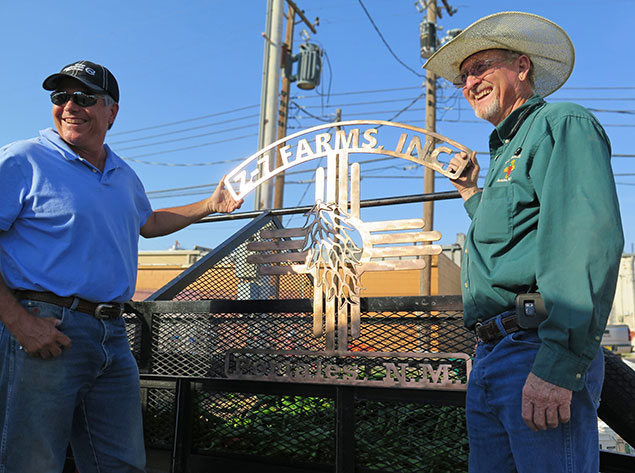
Rick Ledbetter, right, and friend Kirk Bryant take a break from the farmers market to show off Rick's Father's Day present — a sign that son Spencer fabricated with a computerized plasma cutter. The Ledbetters' farm takes its name from the cattle brand registered by Rick's grandfather, and uses Evelyn's logo design, which features chiles over the Zia sun symbol.
Photo by Christine Forrest/Farm Credit Bank of Texas
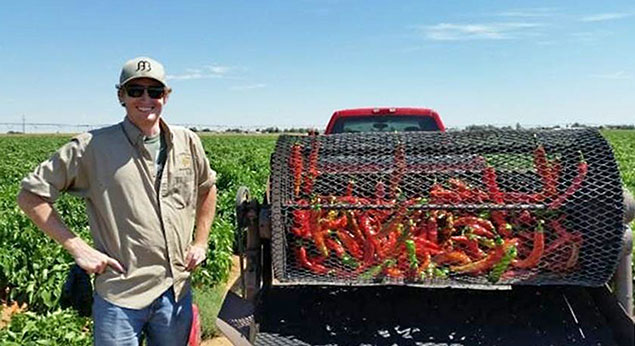
Rick and Evelyn's son, Spencer, is now an engineer at an ag equipment manufacturer in Lubbock, but frequently visits the Portales farm where he enjoyed building and modifying equipment as a youth. "He's very creative and loves working on the equipment or designing something new. That's always been him," Evelyn says.
Ledbetter family photo